Old Master drawings are relatively affordable in comparison to paintings and therefore provide a good entry point for buyers starting their collections. The upcoming auction for Old Master Drawings in the Dorotheum on 30th March 2016 features a large selection of works on paper from 15th-19th centuries, ranging from old German prints to works from the Italian Renaissance, the Baroque, and the drawings of classicism and the Romantic period. However, a budding collector still needs to heed a few guidelines before he/she makes a purchase.
1. Train your eye by studying original works
Anyone starting to collect Old Master drawings should build up a solid basic knowledge of artistic techniques on paper as well as the various functions of drawing in the corresponding periods. Before classifying by style, you should first examine the paper used by the artists and, if available, the watermark. These can help you date the work more accurately since there are works ‘in the style of’ an artist, which at first glance seem authentic but with closer attention can be seen to be copies on paper from a later date. In order to get a proper overview of the subject we recommend you read appropriate literature, but if possible, studying the originals up close is of course the best way to learn! The study hall of the Albertina – which possesses one of the most comprehensive and valuable collections of drawing and prints in the world – offers an excellent opportunity for studying old drawings and prints which I would heartily recommend to every collector.
2. Paper, technique and the purpose of a drawing
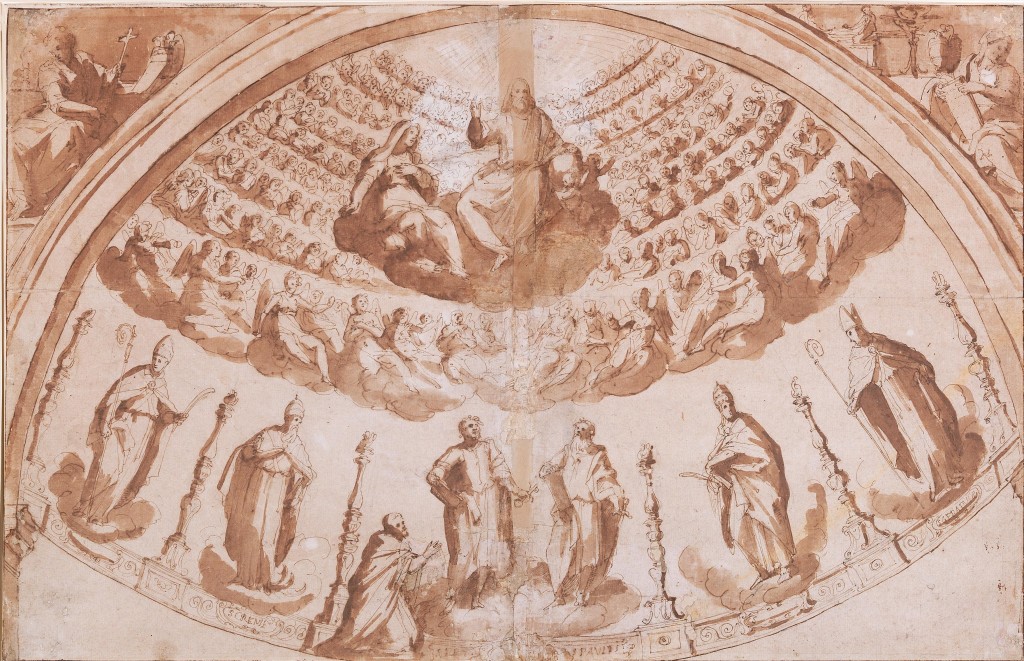
The techniques used by artists – be it paint brush, pen and ink, pencil, or chalk – also provide useful evidence when estimating the date, provenance, and purpose of a drawing. From the Renaissance until the Baroque period, the primary purpose of a drawing was to develop the initial ideas and details for a larger composition, which the artist or members of his workshop would later implement. In the rarest cases however, artists would produce drawings that were stand-alone pieces of art also serving as preliminary studies, sketches of ideas, or modelli in the planning process for a large work. The style and execution of a drawing is therefore important to consider within this context.
Before an artist in the 16th and 17th centuries began a large painting or fresco they would first draw a large sketch of the whole composition in pen-and-ink finished with wash over black chalk. Giovanni Balducci Il Cosci’s design for a dome fresco with ‘Christ as judge of the world’ (Lot 87) is an excellent example of this.
The next things to consider are detailed studies of single figures, e.g. studies of shadow and the incidence of light. The artist would mainly use coloured paper and chalk as this could achieve a particularly soft effect in the modelling of figures and the tonal values of light and shadow. The sequences of movements and the position of individual figures was mostly drawn with a quick pen sketch. The below drawing by Agostino Caracci (Lot 83), which joins several different sketches of figures on one piece of paper, is an example of this technique. As soon as these preliminary sketches were done, a modello of a small-format version of the whole composition would be made up which would often be submitted to the customer for approval. The preliminary studies and the modello could also be transferred into the larger composition to make the execution of the final piece easier.
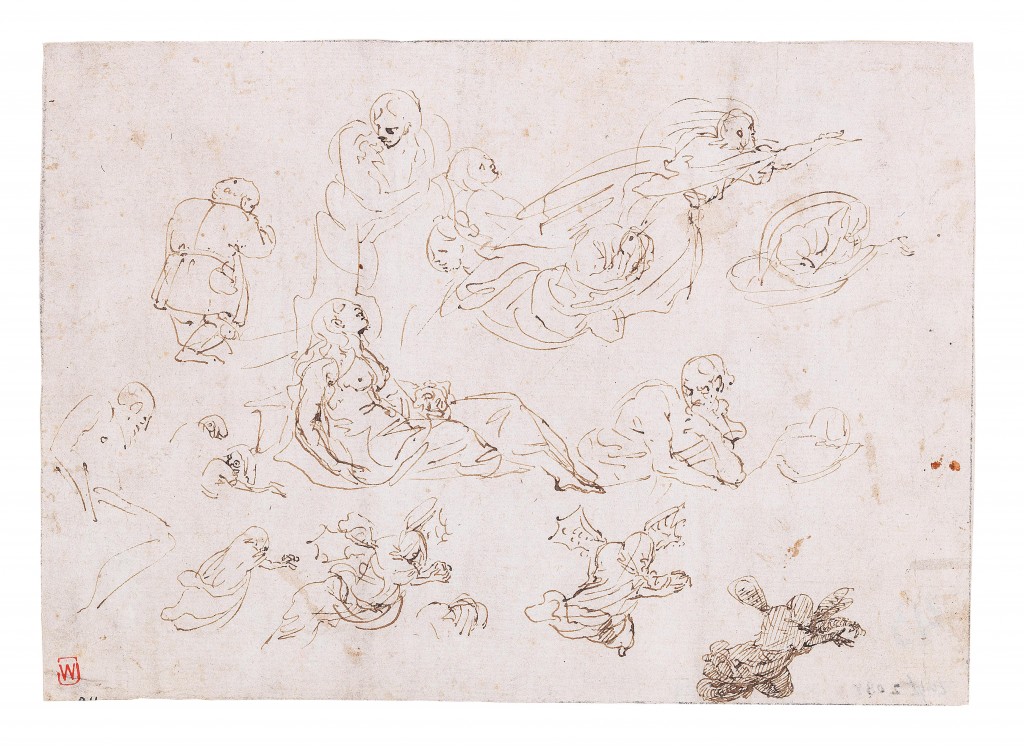
3. Signatures, Markings and Inscriptions
In contrast to paintings, in the majority of cases, Old Master drawings are not signed by the artist. This often complicates the question of attribution and the identification of the artist. There are often inscriptions and records of ownership on the back of the print or the mount which can act as a useful clue for the provenance of the painting and the potential identity of the artist. But caution must always be practiced regarding these markings, as they are not always helpful and often only reflect the opinion of previous collectors, which can often be inaccurate.
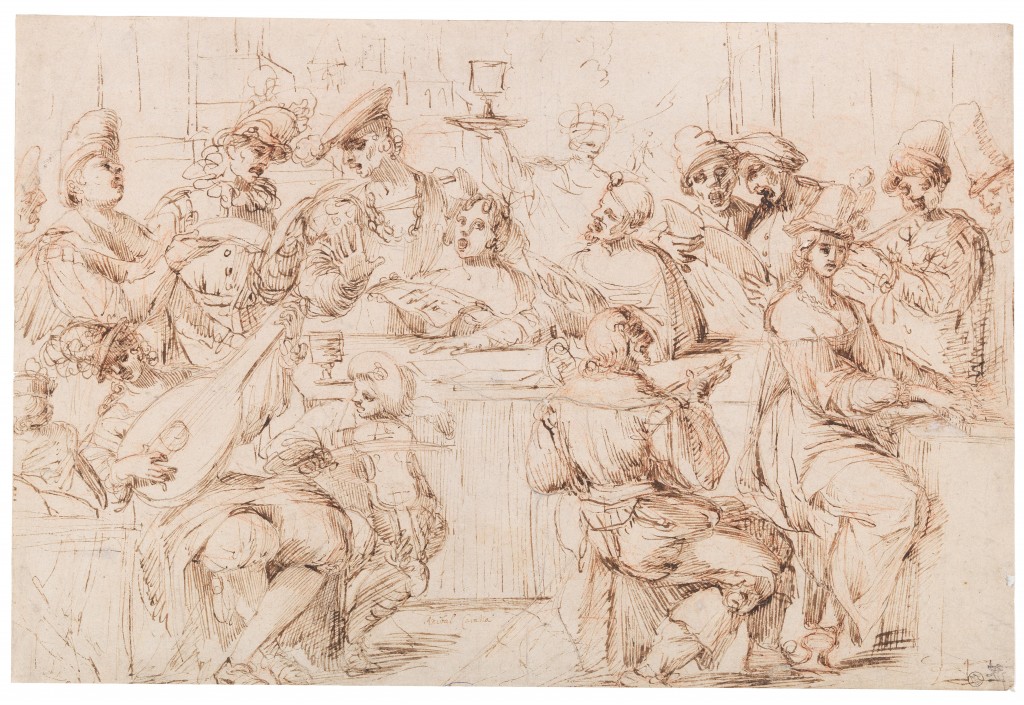
Francesco Brizio’s draft (Lot 84), for example, was previously attributed to Annibale Carracci and had borne a corresponding inscription in various collections since the middle of the 19th century. Only after renewed examination was the drawing recognized as the work of Carracci’s less renowned contemporary. The relationship between a sketch and a finished painting can also be crucial to an accurate attribution. There are often alternative studies for a painting which have already been authenticated, and comparison with these can make the attribution and dating of a drawing easier.
4. Drawings as collectors’ objects – market prices, authenticity and evaluations
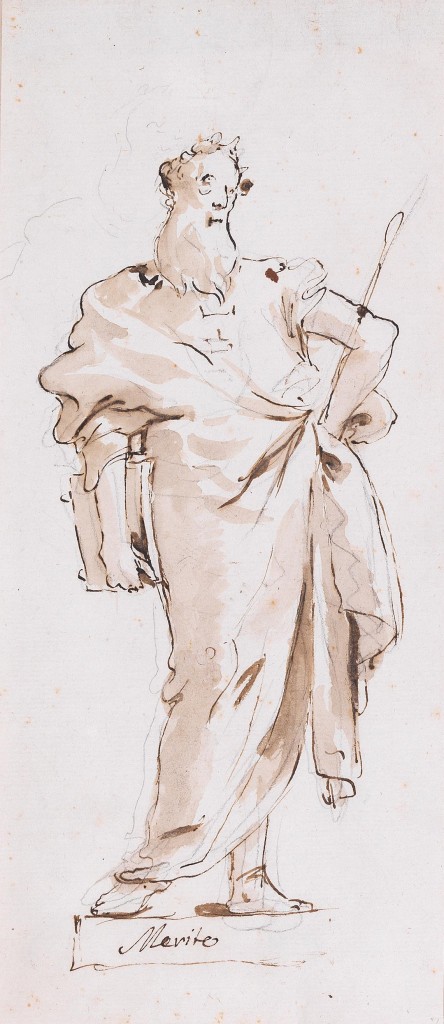
In comparison to paintings, the prices for works on paper by the old masters are still relatively affordable. A small sketch of an anonymous Italian artist can be had for a few hundred euros, but even drawings by well-known artists can be affordable for young collectors.
The draft for a fresco ‘Allegory of Merit’ by Giovanni Battista Tiepolo (Lot 88) or the study for ‘Venus and Cupid’ by Luca Cambiaso (Lot 82) are outstanding examples of work by these artists which can be bought at a fraction of the price of paintings by the same artists. However, you should always obtain confirmation of authenticity and attribution from an expert before making any investment into a drawing that is being offered as an authentic work of an artist at auction or at an art dealership. Display in an exhibition or publication in a monograph can often increase the price and significance of an item. As a general rule, I would only recommend someone to invest in a drawing if it fits your personal taste and you can see yourself living with it.
5. Taking care of drawings
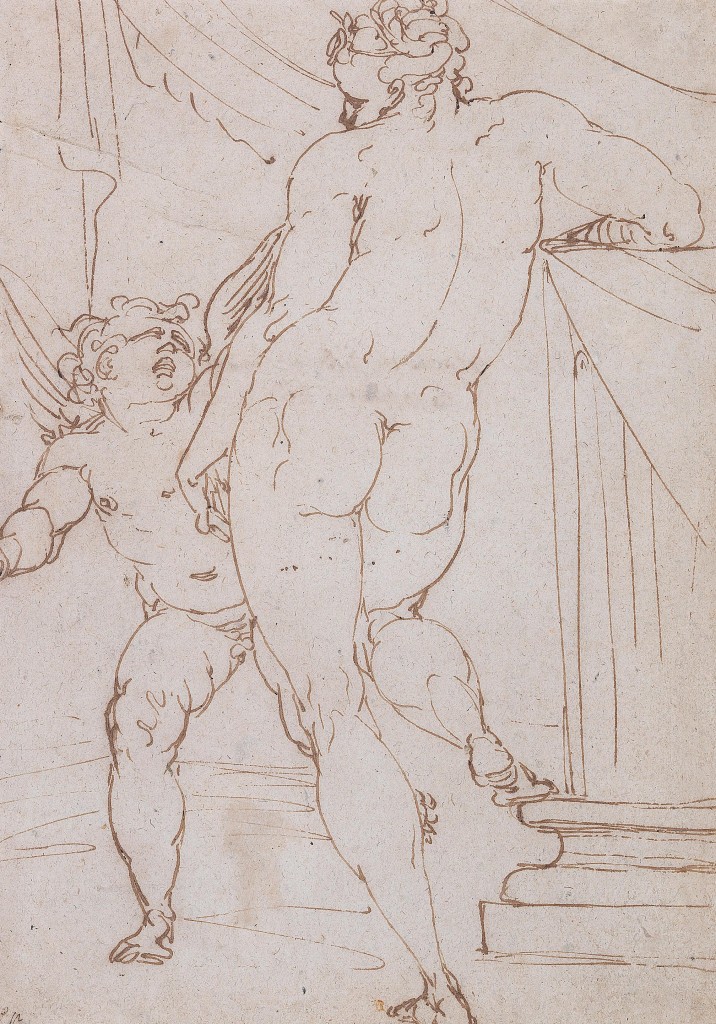
Only in the rarest cases can you purchase a flawless old drawing in pristine condition. Works are often browned, foxed, and have tears or old restored blemishes. Minor damage and age-related signs of usage can be repaired professionally by a paper restorer but in order not to cause further damage to a drawing, proper care is necessary. Since paper and drawing materials are very sensitive to the effects of UV-light, caution should be taken when hanging so that the drawing is not directly exposed to sunlight. Rooms with high humidity or on basement level should also be avoided as places to store your drawings because humidity can lead to a buildup of foxing. Framing mounts made from acid-free carton and frames with UV-filtering museum glass can prevent damage of this kind.
Have we stirred an interest in old master drawings? Take a look at what we have on offer in our upcoming auction!
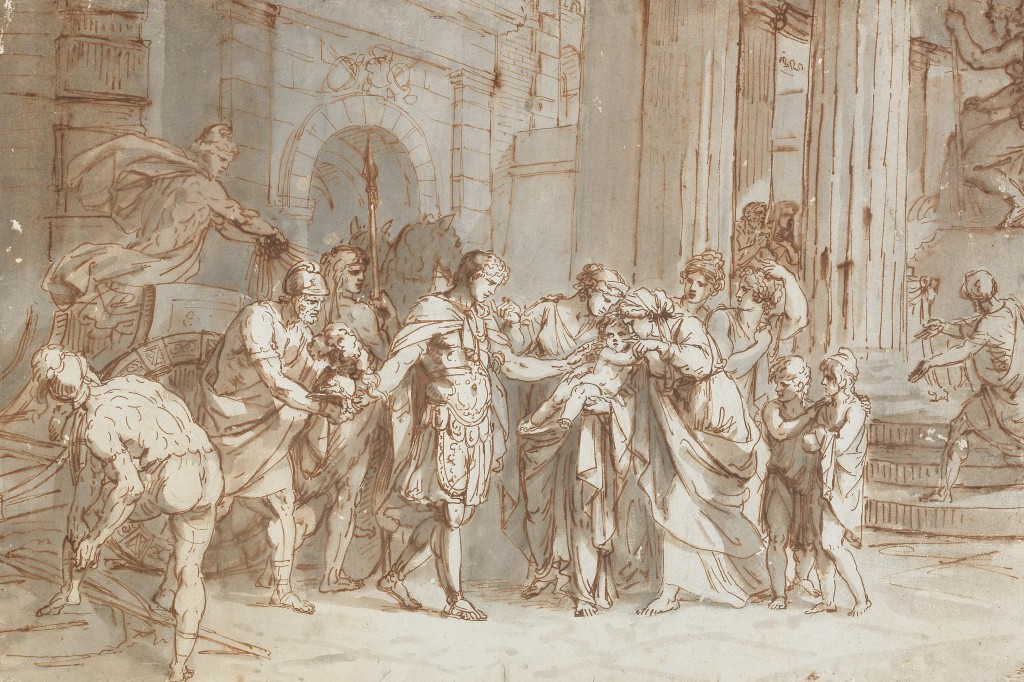
Master Drawings, Prints before 1900, Watercolours, Miniatures
Wednesday, 30th March 2pm
Palais Dorotheum, Vienna
Our experts are happy to provide evaulations. This service is free of charge and involves no obligation.
Mag. Astrid-Christina Schierz
Tel. +43-1-515 60-546
astrid.schierz@dorotheum.at













